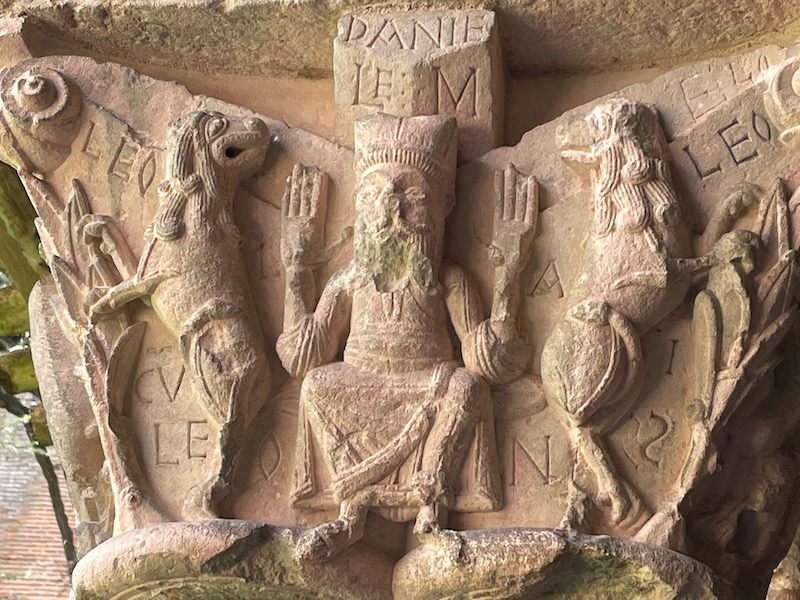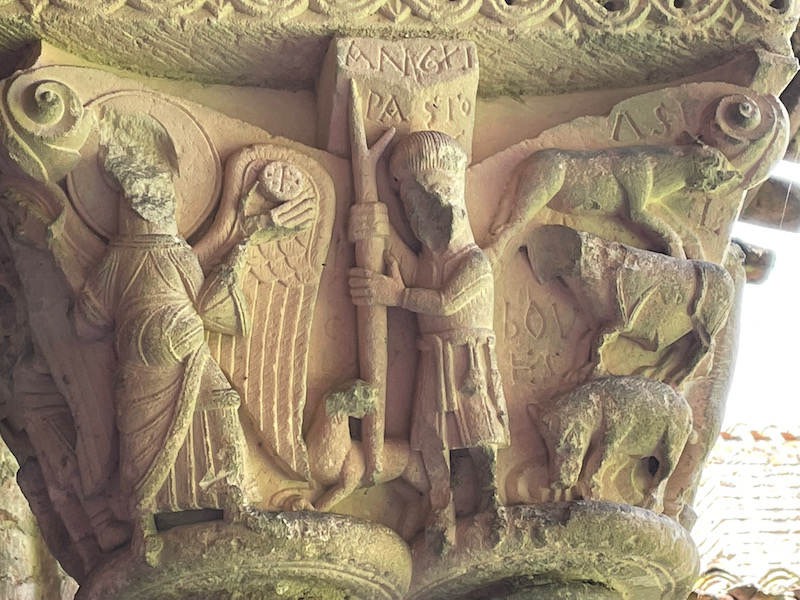Our Blog - Moissac Abbey, France
The actual founding of the abbey is not exactly clear. Legend has it that the abbey was founded by the Frankish king Clovis in 506, making a vow to erect a monastery with 1,000 monks if he won in a battle over the Visigoths. Historical records indicate that it was founded by Saint Didier, bishop of Cahors, in the 7th century. Other information says that around the end of the 8th century, some Benedictines monks settled at the foot of some vineyards, close to the junction of the Tarn and Garonne rivers. Regardless of exactly how it was established, the Saint-Pierre abbey would become one of the most important monasteries in the South-West of France. In the 11th century, it became affiliated with the Abbey in Cluny, resulting a new church building (1063) and the cloister (1100). The new doorway and tympanum was added in the 12th century.
The French Revolution puts an end to the monastery and the buildings were sold. However, the church and the cloister are preserved as part of the first list of buildings to be classified as historical monuments in 1840. Unfortunately, when the railroad was built nearby, the refectory and many of the outbuildings were destroyed.
We will start outside of the church. I must admit, after seeing hundreds of old churches, I'm getting pretty good at being able to distinguish the different periods of construction. On the ground floor, you can see white stone block sand round, Romanesque arches around small windows. That is the original 11th century part. Then the upper floor is 15th century Southern Gothic style, mostly red brick, pointed arches at the top of much larger windows.
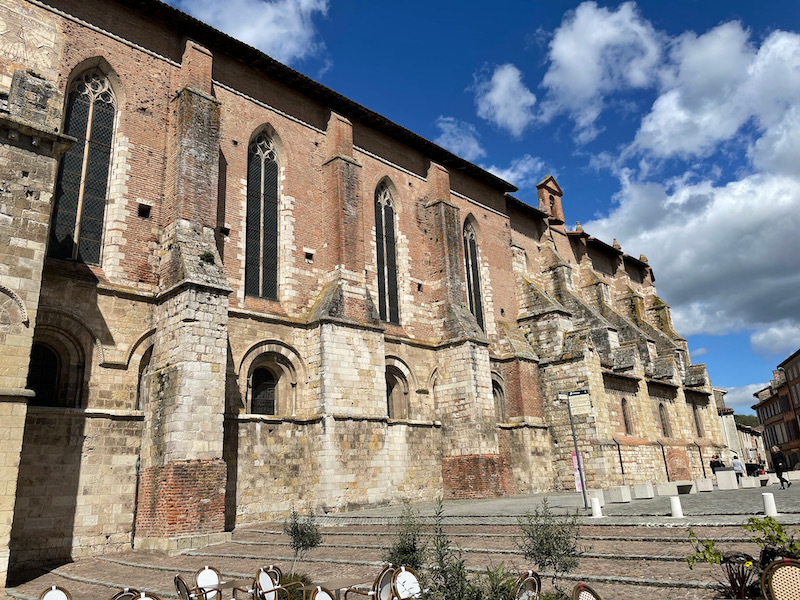
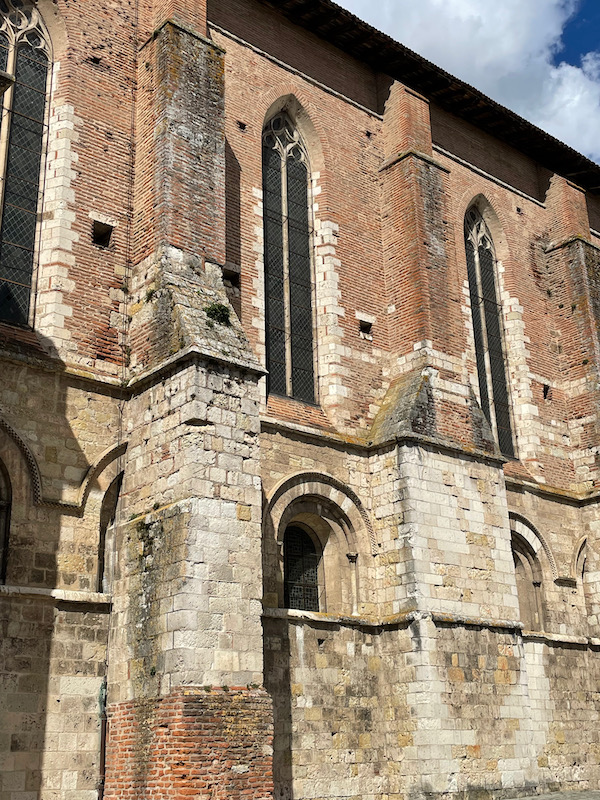
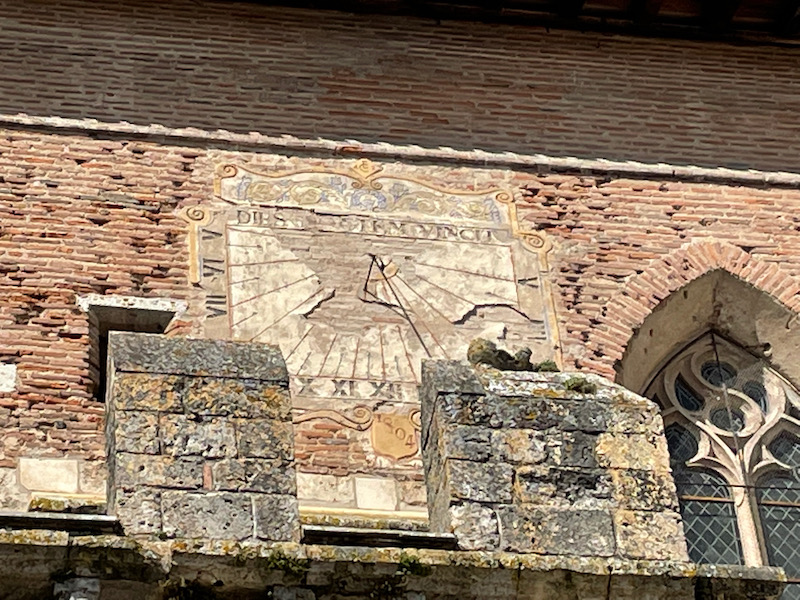
The South doorway and the tympanum above was added in the 12th century, around 1110. In the center is Christ, identified by the halo around his head, his right hand blessing and his left hand holding a sealed book. Surrounding him are the symbols of four evangelists (the lion for Mark, the bull for Luke, the angel for Matthew, and the eagle for John). There are also 24 elders around, each playing a different bowed string instruments. On the detailed picture, you can clearly see the instrument on his lap while holding a chalice in his other hand.

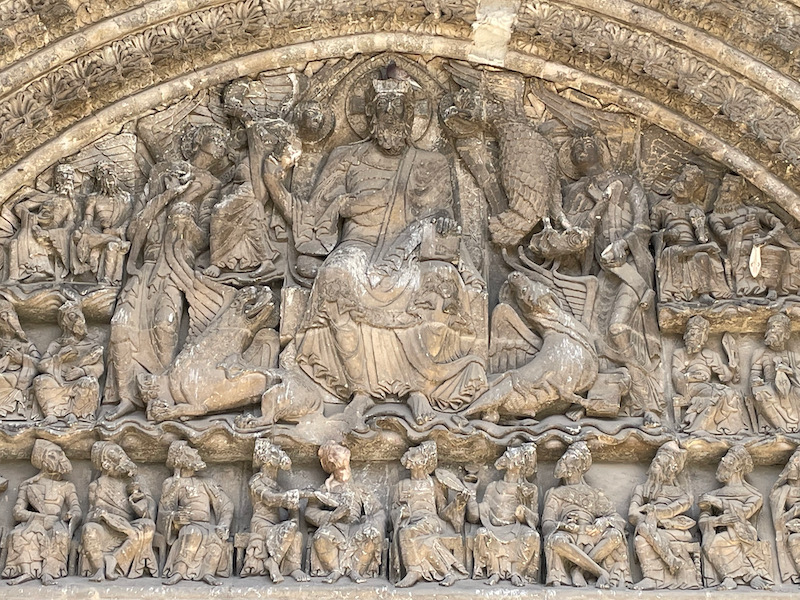
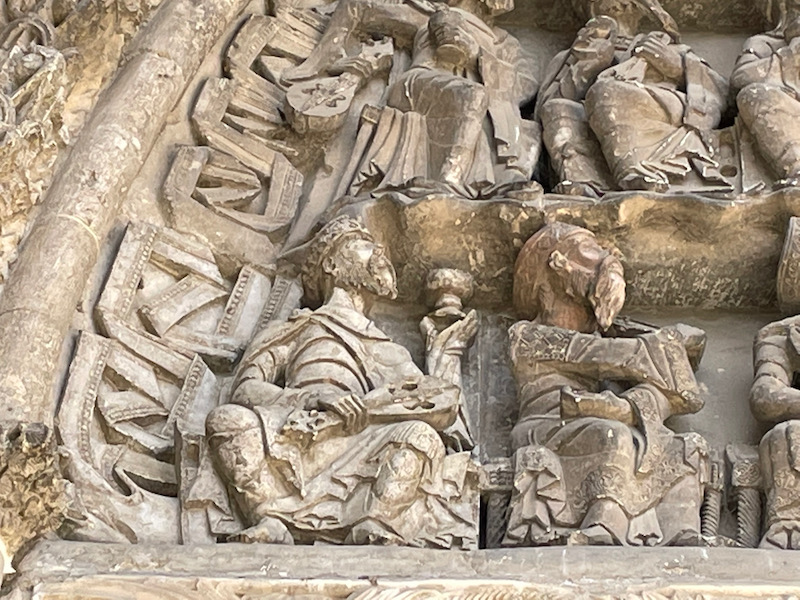
The sides of the porch are also sculpted and they present a traditional medieval symbolism of lateral dualism: basically the right and the left symbolizing the antithesis of good and evil. Here I am showing the reliefs on the right (the "good"). You can see the Presentation in the Temple (the building on the left side) and the Flight into Egypt.
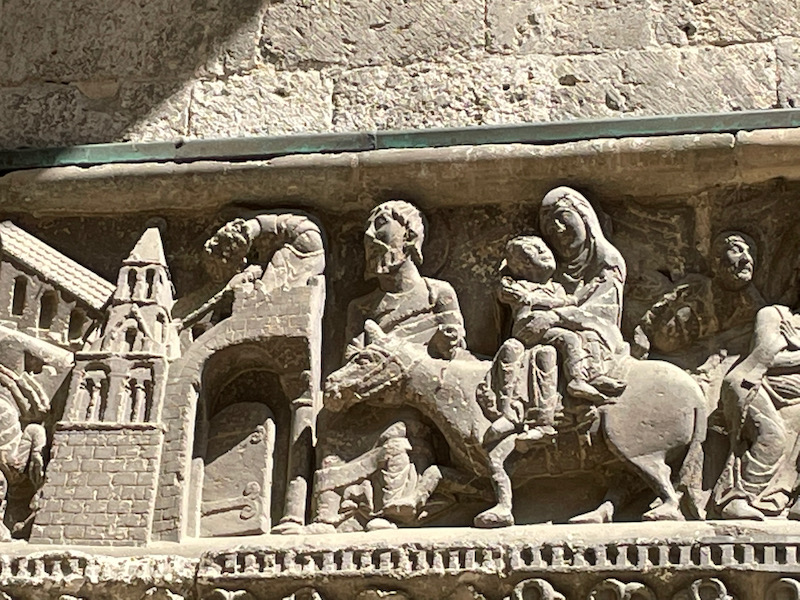
A narthex is quite common in early Christian churches, consisting of the entrance or lobby area. The people enter through the grand South doorway (that you just saw) and into this room before going into the church itself. The purpose of the narthex was to allow those who could not enter the church to hear and partake of the service. The vaults rest on eight columns with large, highly stylized capitals from the 11th and 12th centuries.
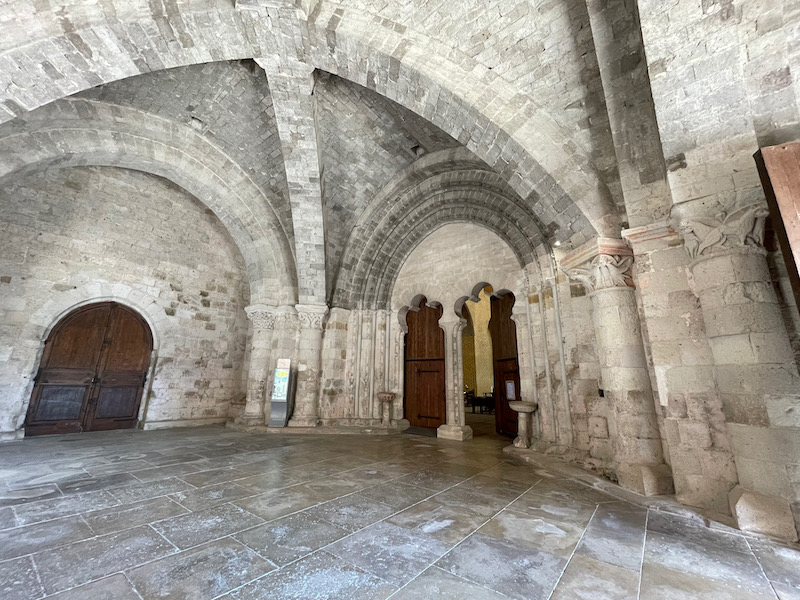
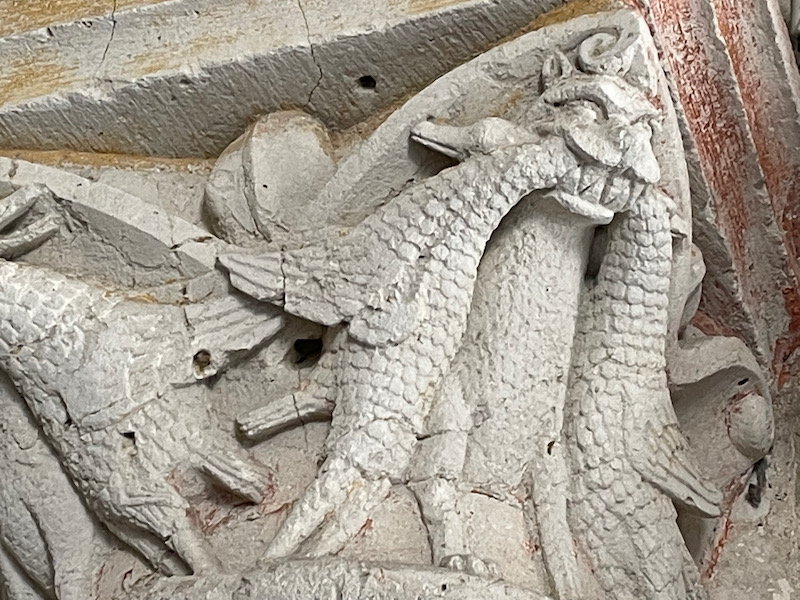
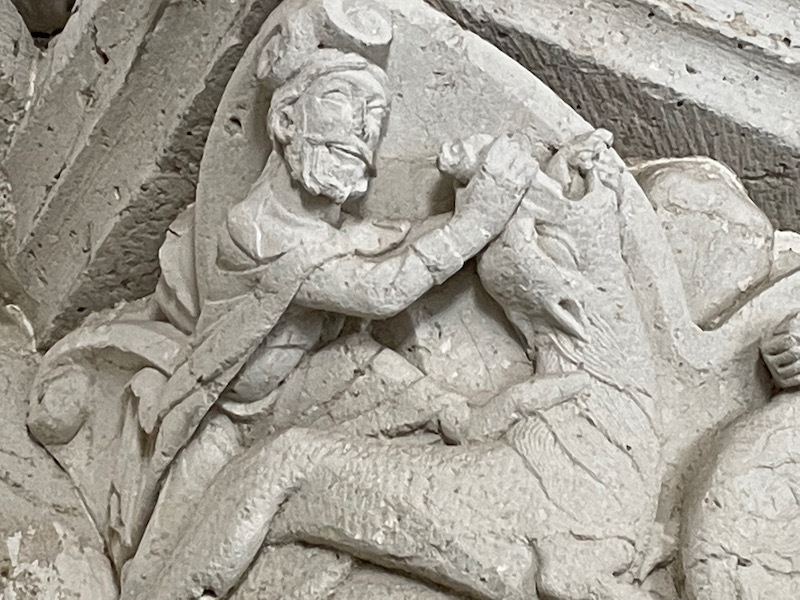
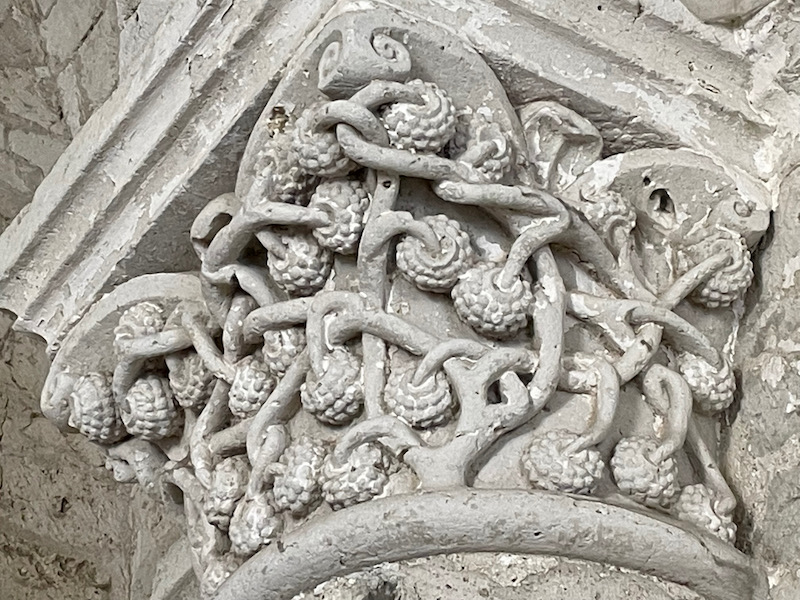
Two views of the interior, the first from the ground floor and the second from the upper floor of the cloister. The yellow walls with flowers is painted. There was an interesting sign that pointed to a place where the paint had been rubbed off, saying that this spot proves that all visitors (or nearly all) came to touch here to assure themselves that is not was wallpaper.
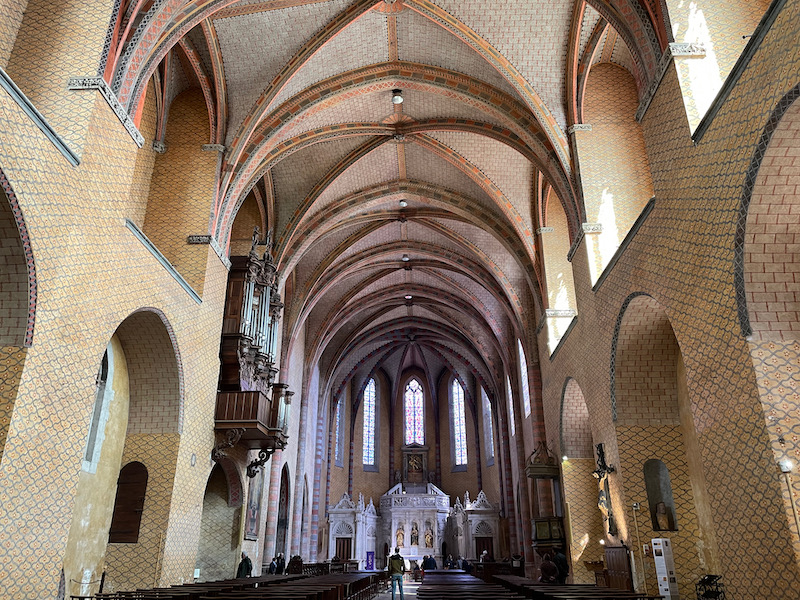
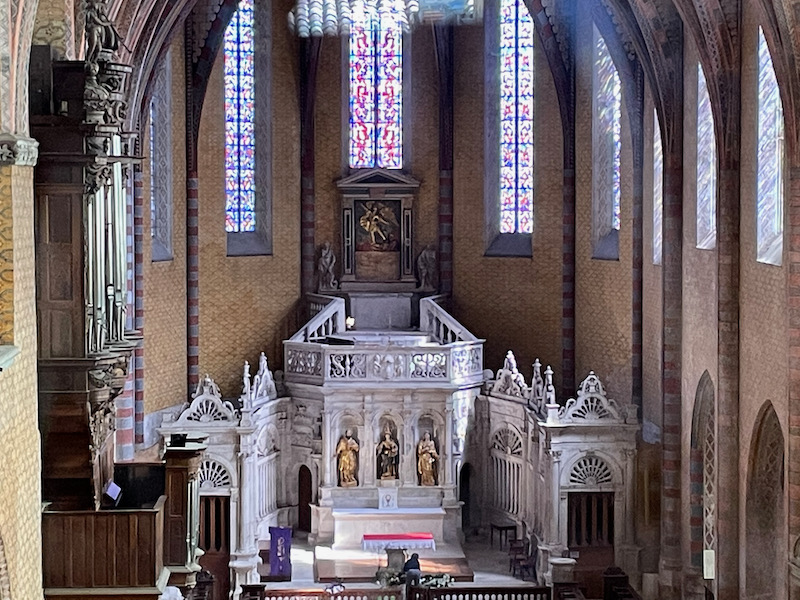
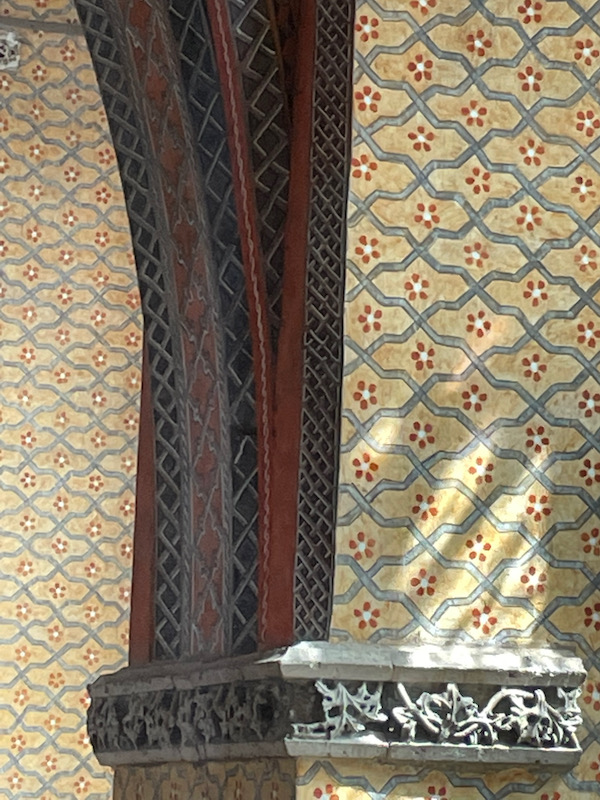
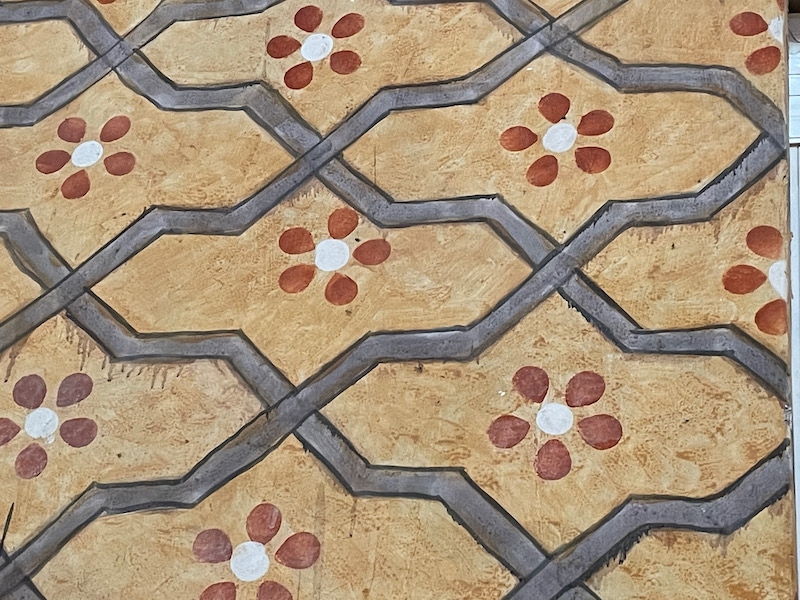
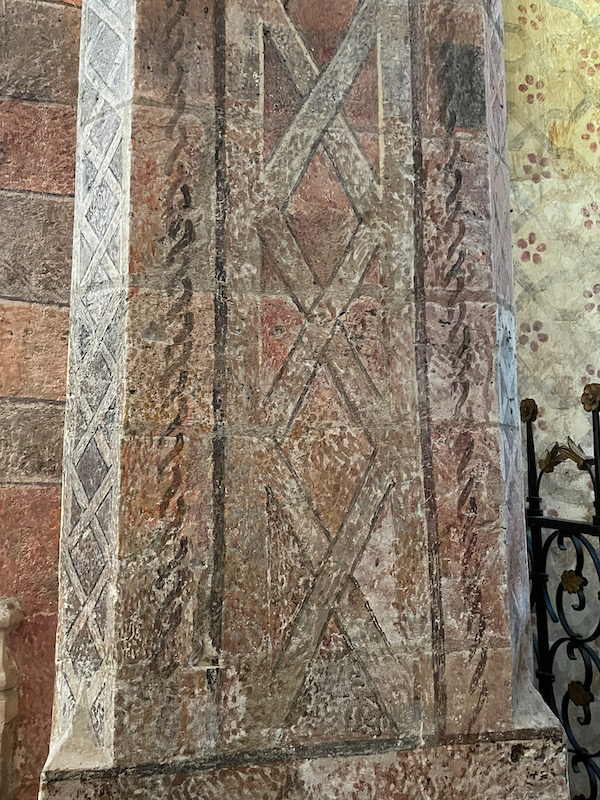
Here is an interior view of the Romanesque ground floor small window with round arches below the high ribbed vaults with larger windows and pointed Gothic arches.
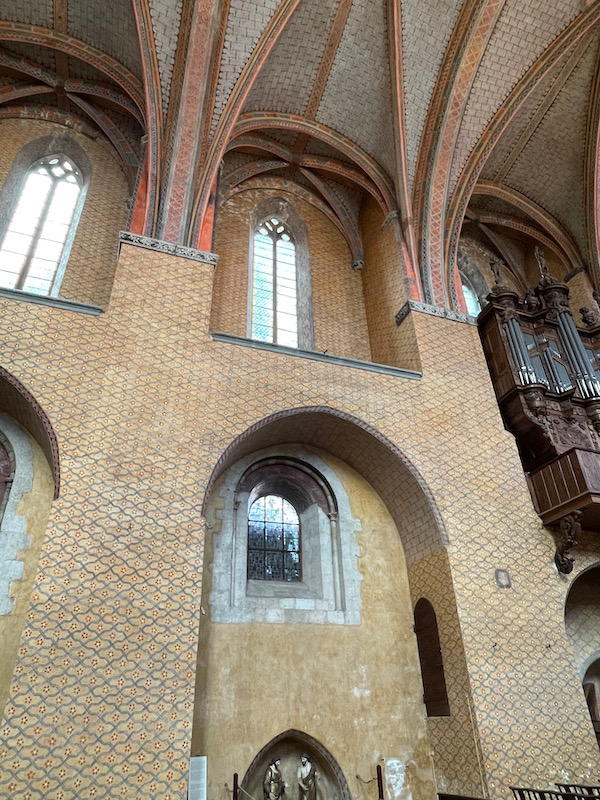
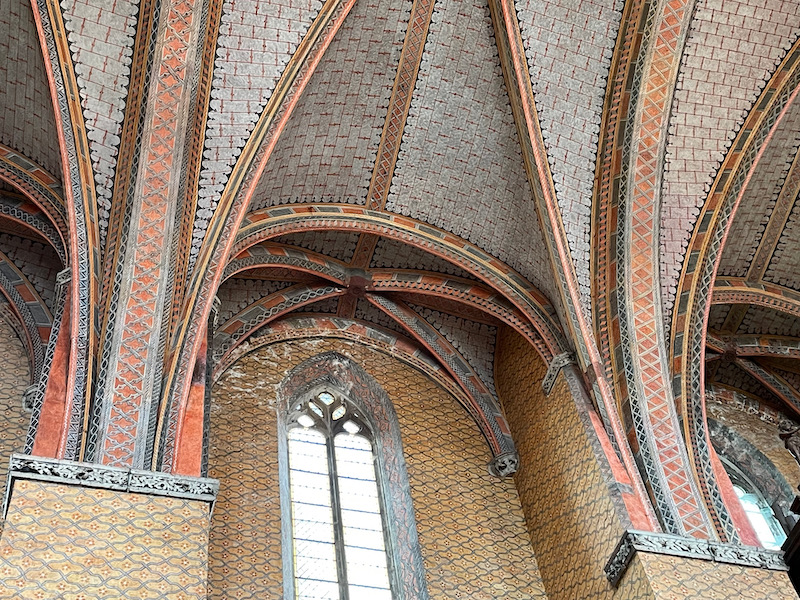
The nave has retained some of the furnishings from the 12th to 15th centuries. The first I show are Gothic 15th century carved wood statues depicting the flight into Egypt. Saint Joseph leads the donkey, which carries Mary and baby Jesus.
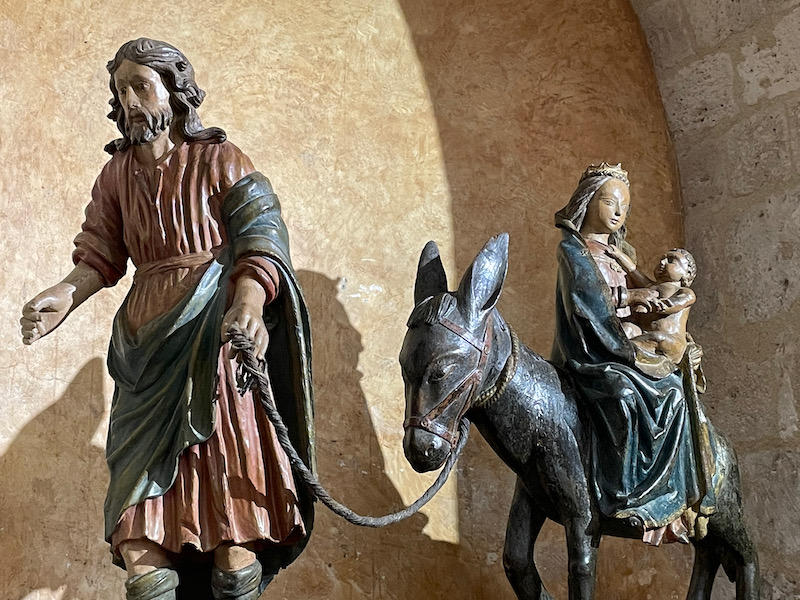
The choir is surrounded by a carved stone enclosure, from the 16th century, which makes quite a statement!
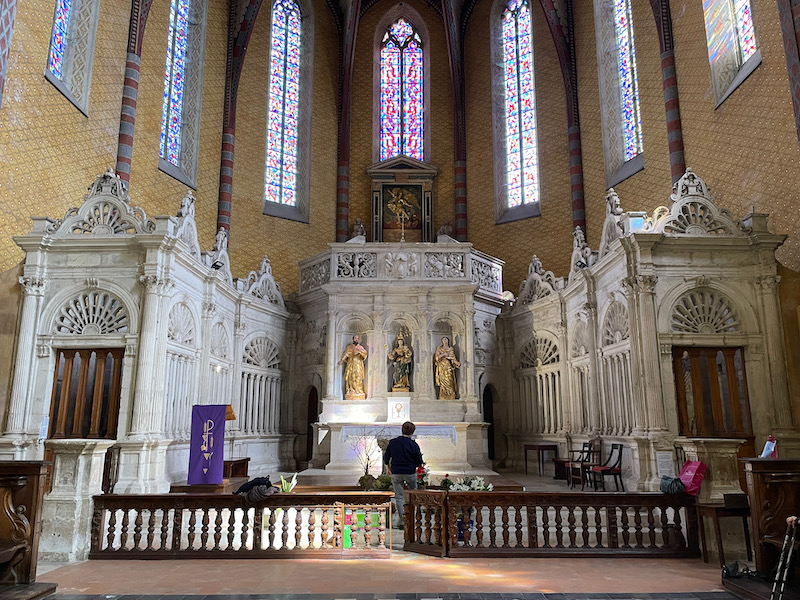
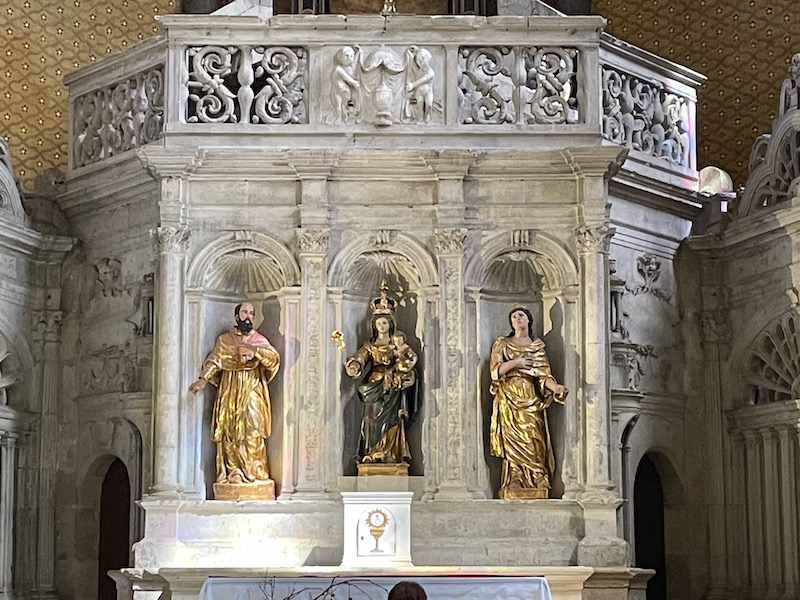
This group, showing the Entombment of Christ, dates from 1485 and is one of the masterpieces that you can still see within the church.
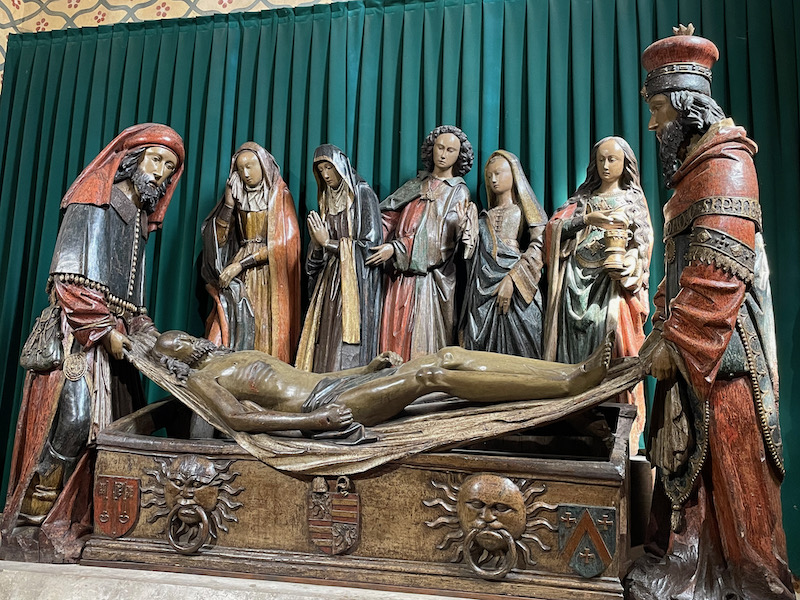
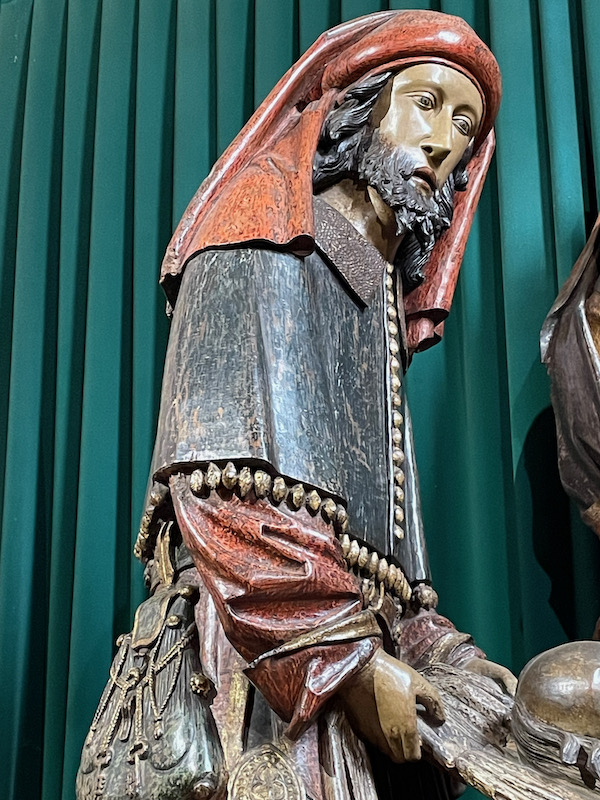
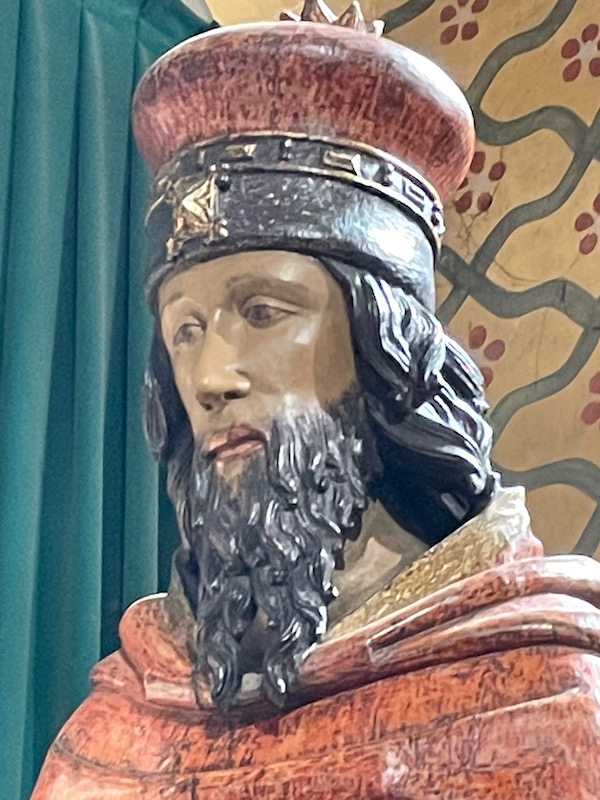

This is a fragment of the 11th century mosaic floor from the choir of the church. It was found during excavations that occurred in 1962.
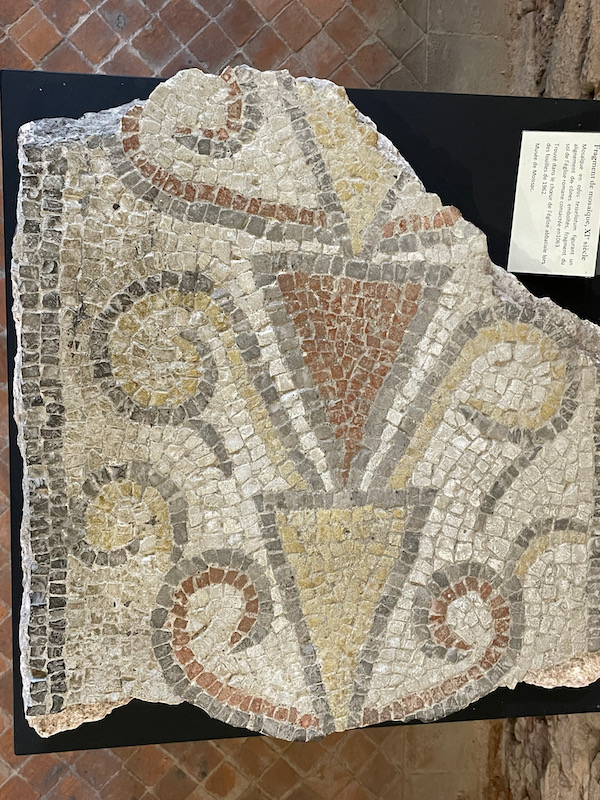
The last thing for the church is a Merovingian sarcophagus, make in the 4th century of white Pyrenean marble. In the middle is a Christogram, the monogram of Christ. This is one of the oldest Christograms, the Chi-Rho. It consists of the superimposed Greek letters chi (Χ) and rho (Ρ), which are the first two letters of Greek χριστός "Christ". On the right and left within the X are the Alpha and the Omega.

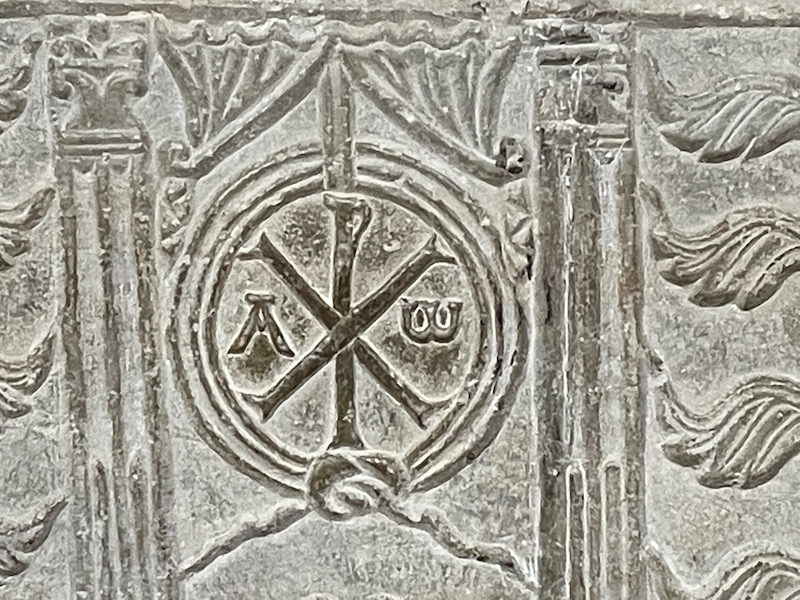
The Cloister is one of the largest and best-preserved cloisters from the Romanesque period. This is made up of 4 framed galleries whose arcades fall on a series of 116 marble columns (some single and some double). About half of the 76 sculpted capitols depict a story from the bible or the saints' lives, while others show birds, palm leaves, rosettes and plant foliage. On the corners and in the middle of each arcade are square brick pillars covered with carved marble slabs. The 4 corner corner pillars represent 8 of the 12 apostles: Peter and Paul, James and John, Philip and Andrew, and Bartholomew and Matthew. Simon is shown on one of the central pillars and the thought is that the other 3 apostles were on pillars of a portico which was there until the 18th century.
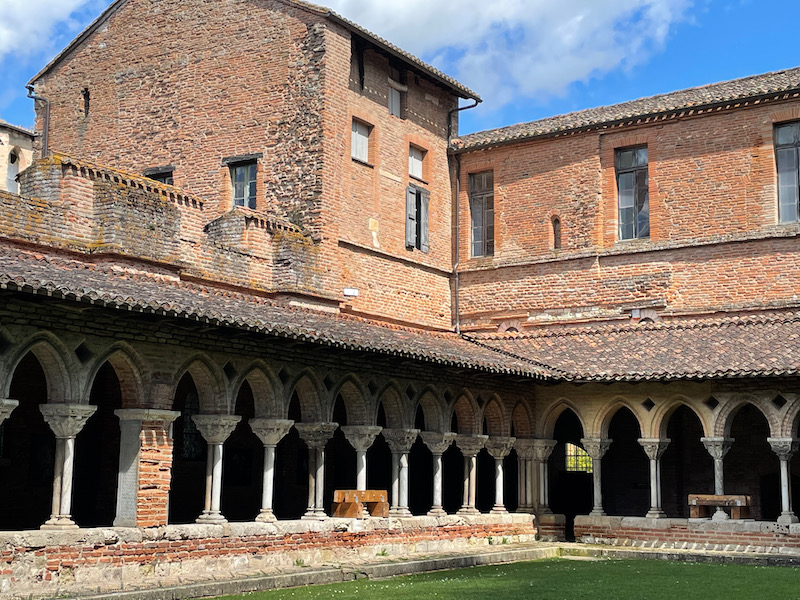
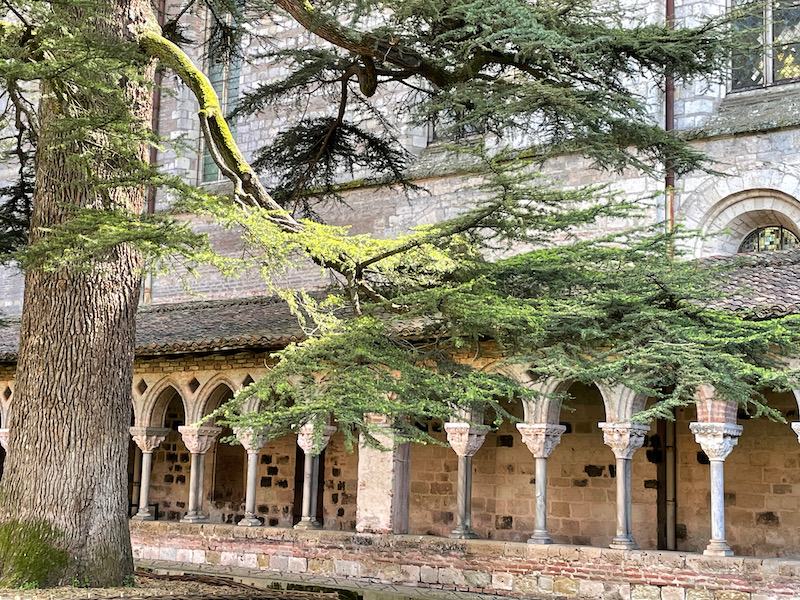
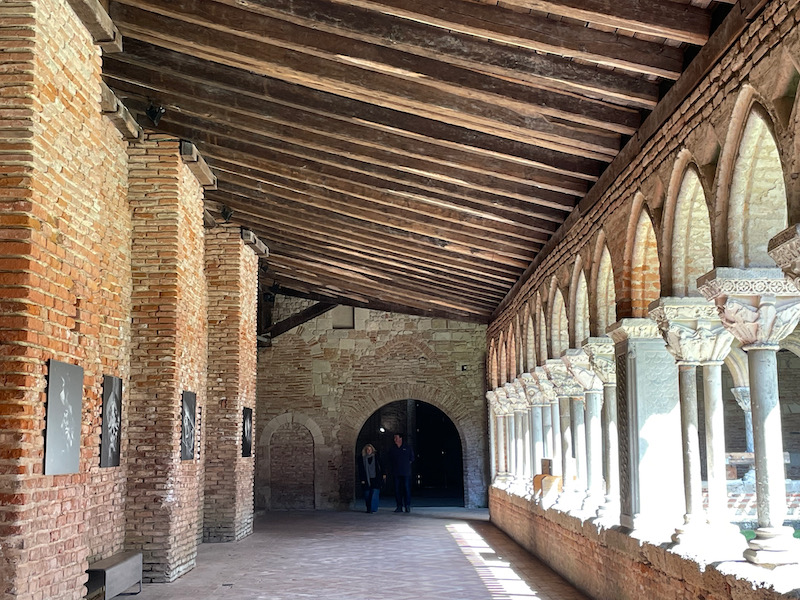
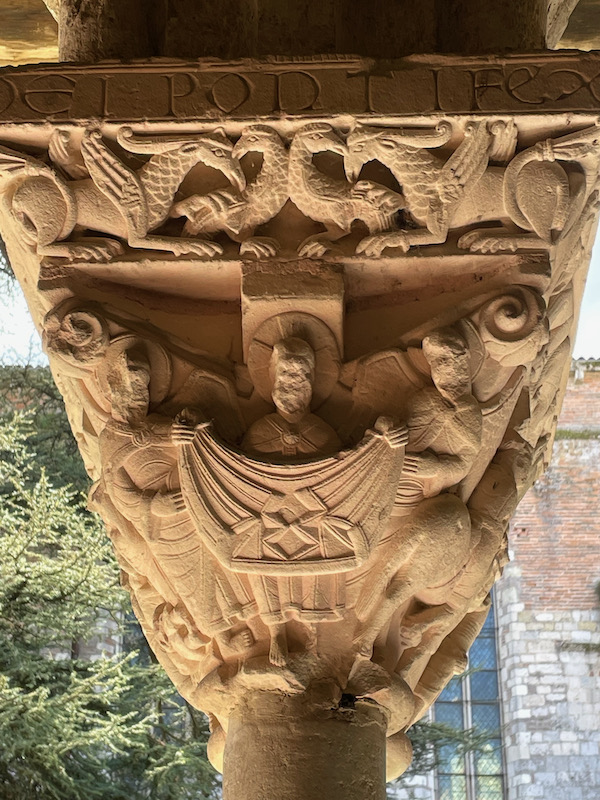
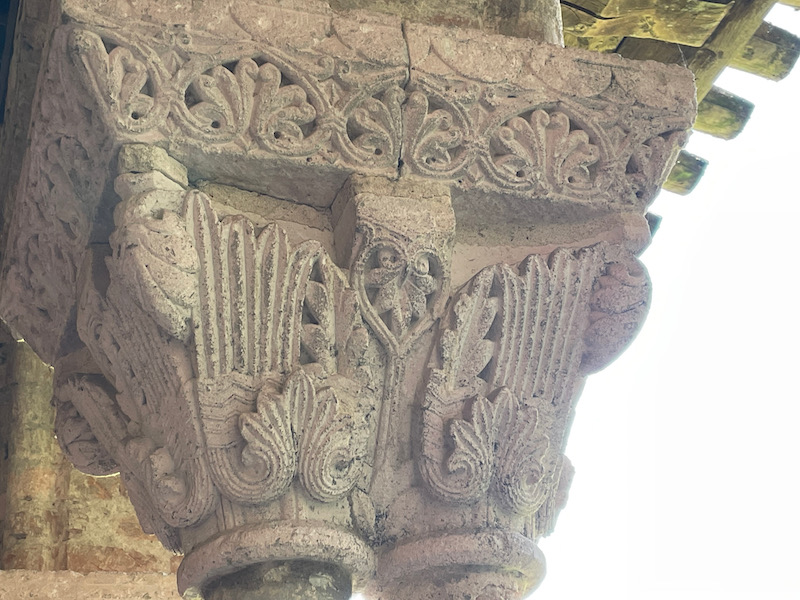
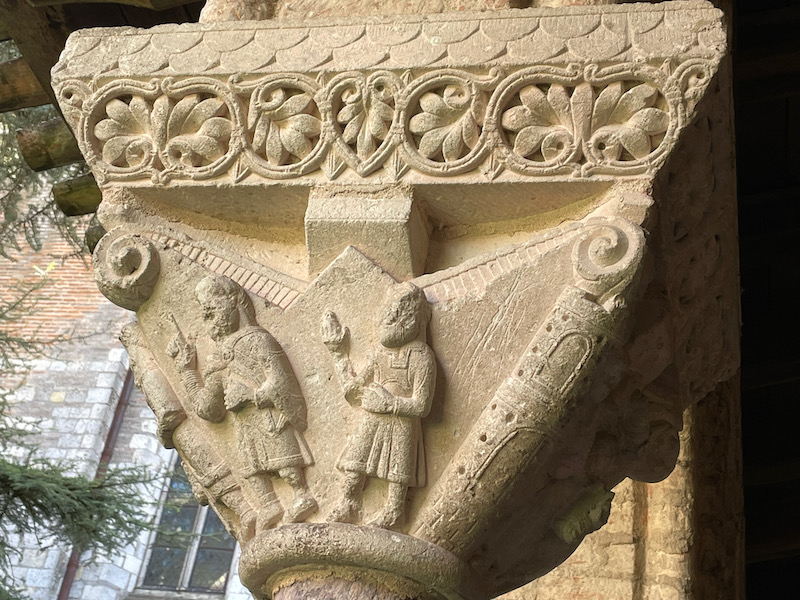
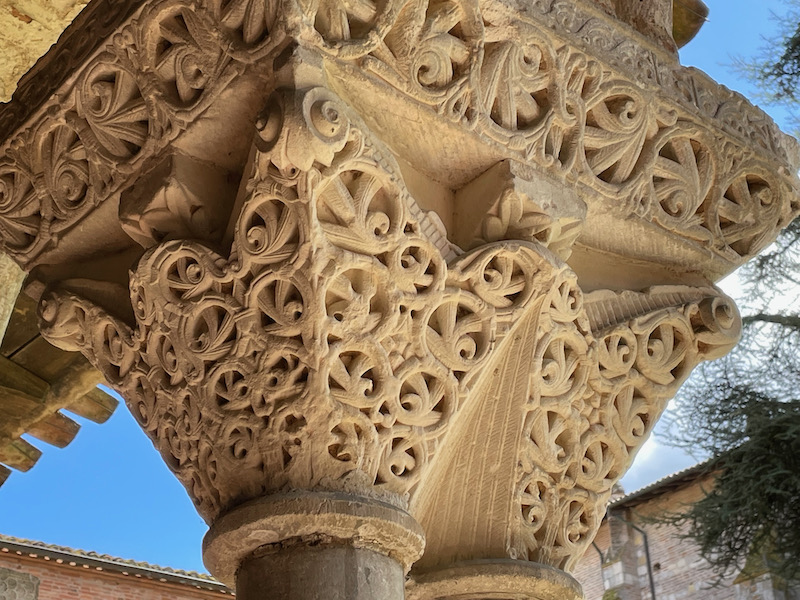
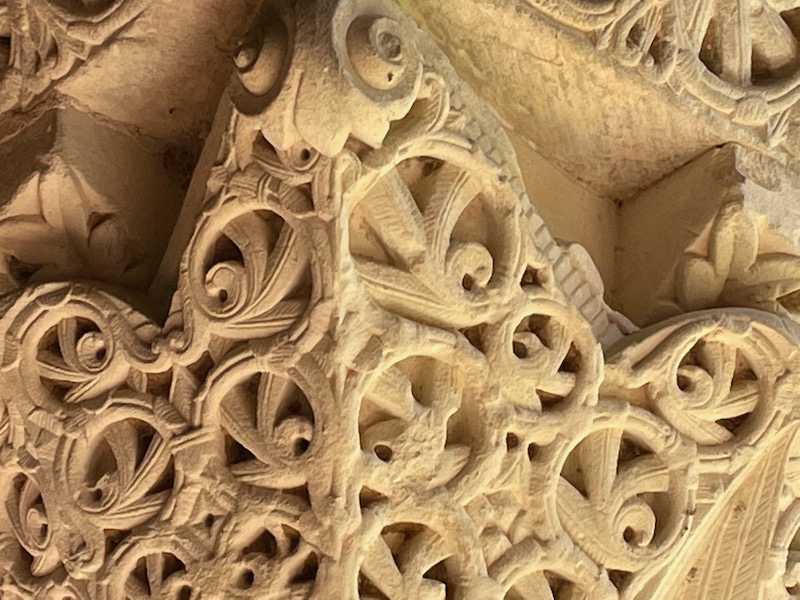
This Latin inscription is carved on the middle pillar of the west side of Moissac Abbey's cloister. It states that the cloister was constructed in 1100.
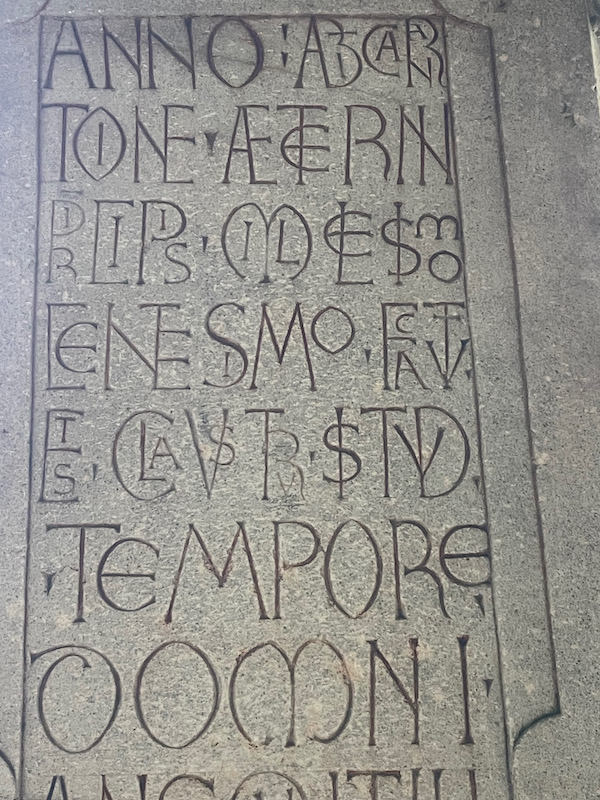
A few very specific columns, this first one telling the story of Saint Martin of Tours. The legend says that while he was still in the military, Martin cut his cloak in half to share it with a beggar. That night, he dreamed that Jesus himself was clothed with the torn cloak. When he awoke, the garment was restored. Moved by this vision and apparent miracle, Martin immediately finished his religious instruction and was baptized at age 18.
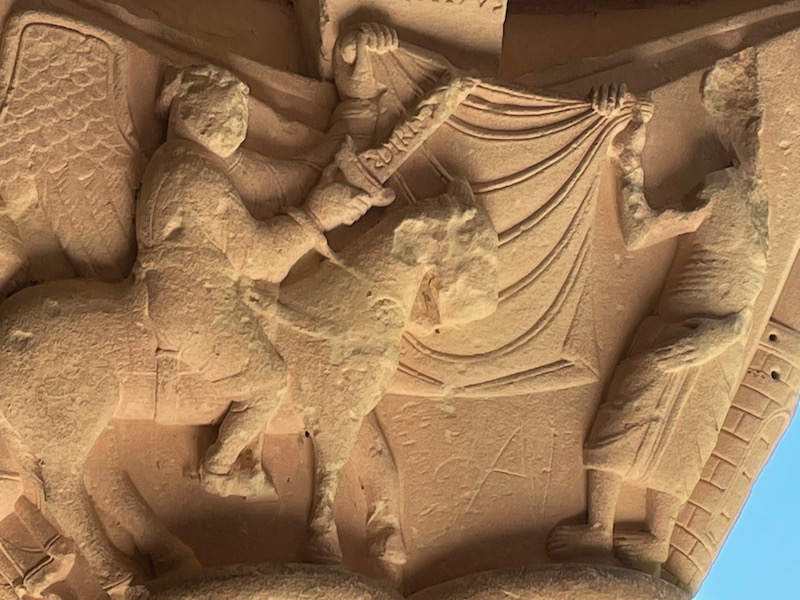
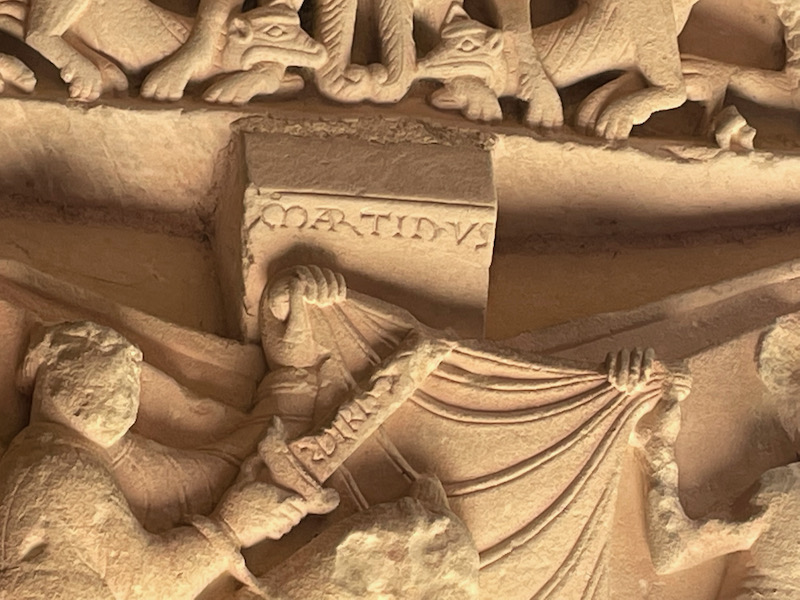
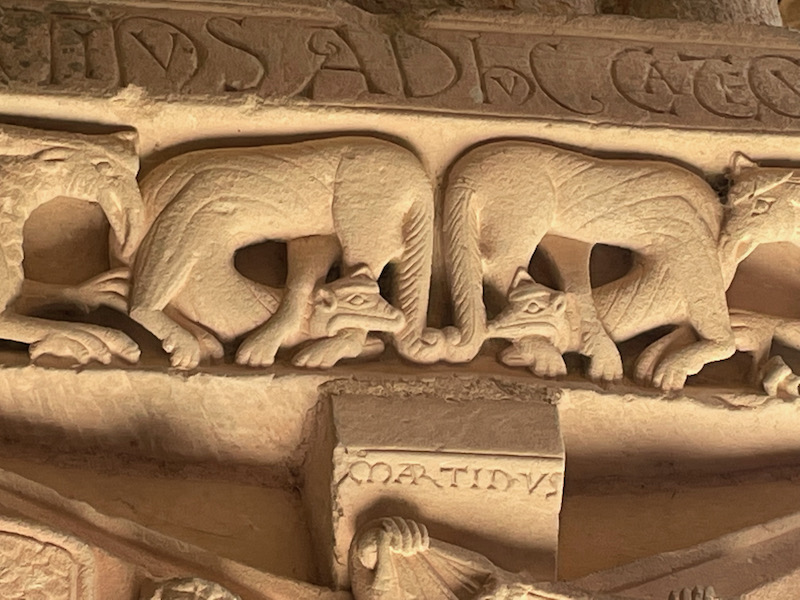
This pillar is entitled The Miraculous catch of fish. According to the Gospel of Luke, Jesus was preaching near the Lake of Genesareth when he saw two boats at the water's edge. Jesus boarded one of the boats and they moved out a little from shore, with Jesus teaching the people from the boat. Afterwards, he said to go out into deep water and let down the nets. Simon Peter answered that they had worked hard all night and hadn't caught anything. But because this was what Jesus had said, they let down the nets. When they had done so, they caught so many fish that their nets began to break, requiring help from another boat.
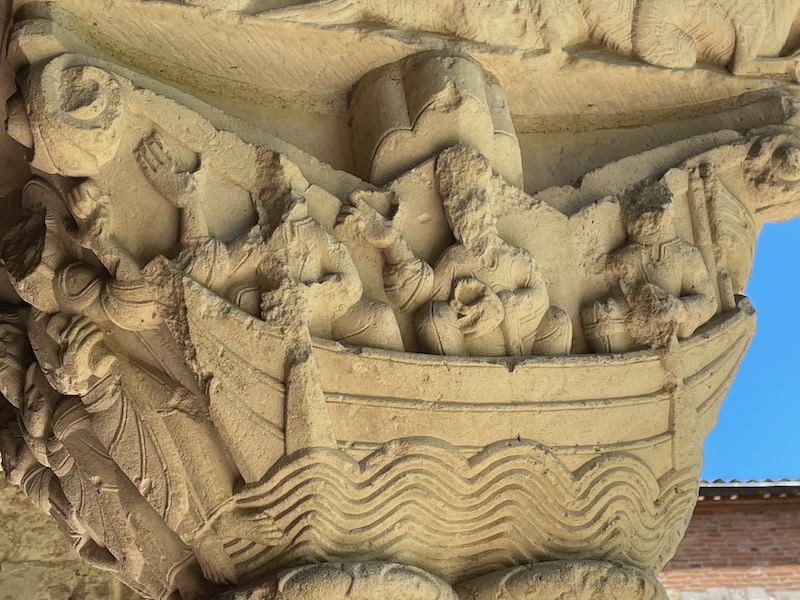
This capital is decorated with the motif of the palmette in an upside-down heart-shaped medallion. At the corners, mouths of animals are open, spitting out stems. In the center, other animals are letting their tongues dangle. Above them at the top, birds, lions, and griffins are fighting each other.
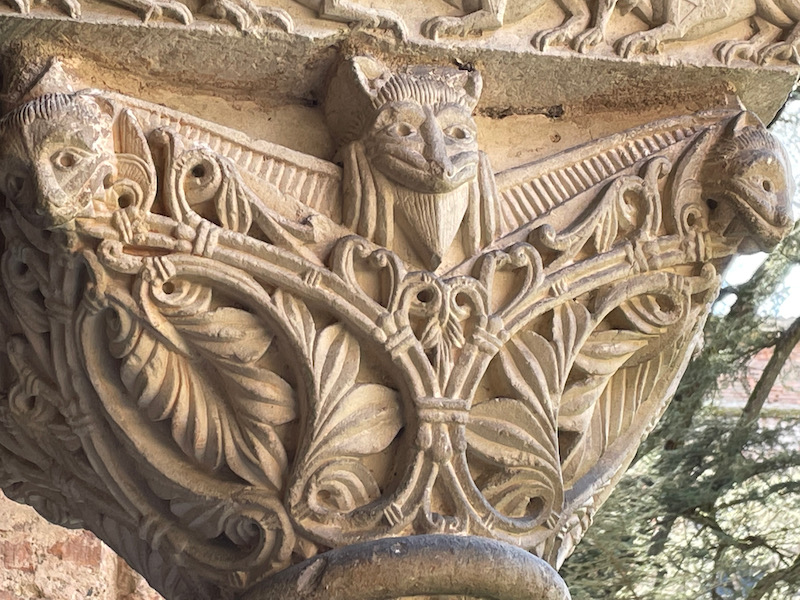
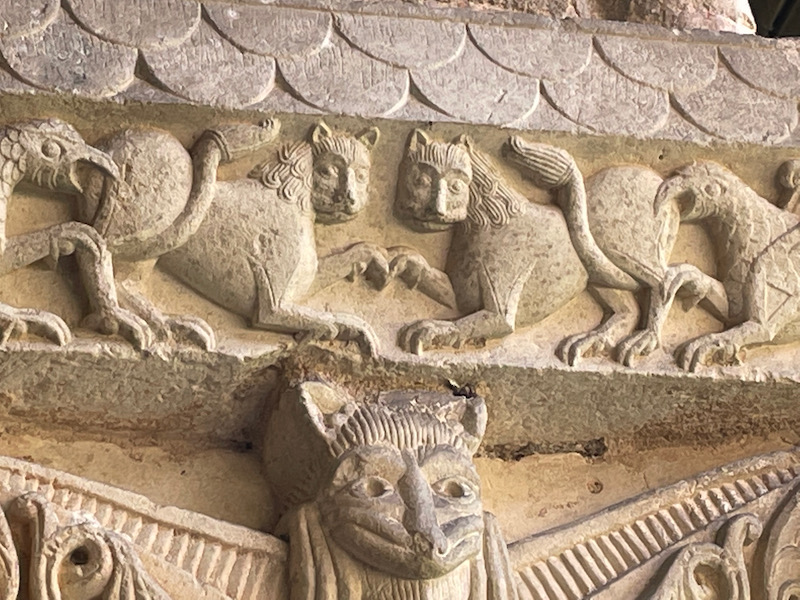
This capital illustrates the city Babylon, showing figuring a fortified palace with walls and high towers. Nearby is a capital depicting the city of Jerusalem (which I didn't get a picture of), and the opposition of these two cities, one considered full of sins and the other considered Holy, is very common.
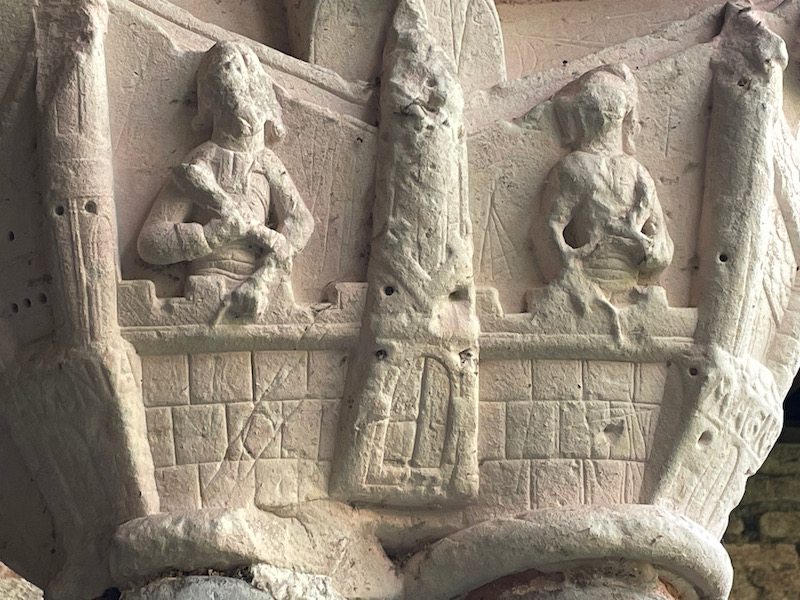
And my last capital, Daniel in the lions' den and the Annunciation to the Shepherds, which is actually 2 stories. Daniel in the lions' den comes from the Old Testament Book of Daniel. King Darius issues a decree that for 30 days, no prayers can be addressed to any god or man other than Darius himself. Daniel continues to pray daily to the God of Israel and the king condemns Daniel to death. He is thrown into a lions' den but he remains unharmed. The next day, King Darius goes and asks if God has saved Daniel, who responds that his God had sent an angel to close the jaws of the lions, "because I was found blameless before him". The second is from the Gospel of Luke in the New Testament. Here you can see the shepherd in the middle with animals behind him, facing an angle that is holding a disk stamped with a cross, the sign of Christ.
